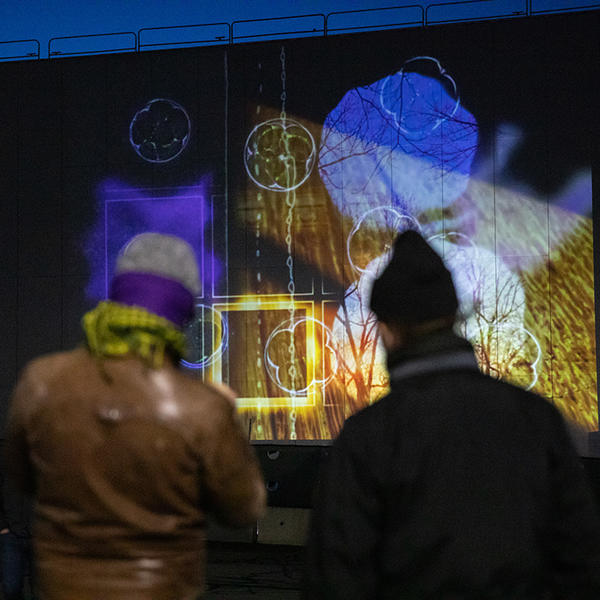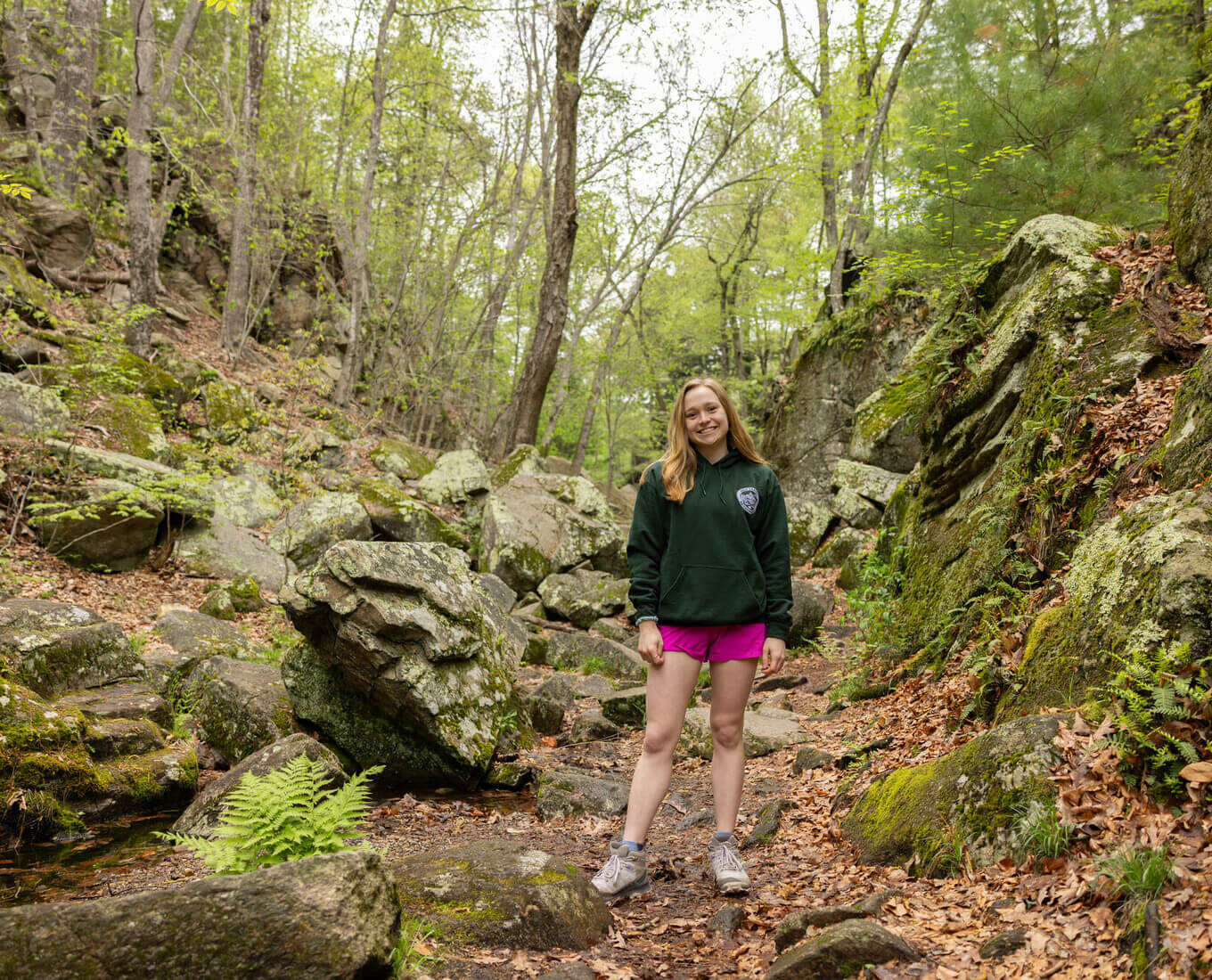Art is often a communal experience: sitting in a theater beside strangers in the dark or standing like sardines singing along at a concert, it offers the promise of coming together.
Such gatherings have shifted during the pandemic. Nonetheless, the arts still glimmer with a unifying quality — something Holy Cross' Montserrat program has offered students during this challenging time.
"Our hope is that the Montserrat experience has a rich community feel to it," says Professor Timothy Joseph '98 of the department of classics. "Doing most of our work over Zoom created obvious challenges, but the work with [harpist and composer] Maeve Gilchrist this year led my class to shared experiences and communal connections I'd never seen a class make before."
Joseph is among a number of professors using the arts to dynamically engage first-year students as part of Montserrat, the unique first-year program that merges in-classroom learning with out-of-class experiences to help students discern their callings and individualities. Students are grouped into clusters, and those in the same cluster share a classroom and dormitory so conversations and growth can flow freely from place to place. As part of the Divine Cluster, Joseph's students worked closely with Gilchrist, a Scottish musician, on audio and video projects "using music, words and images to explore what heritage means to them, both personally and collectively," Joseph says. "These creative, collaborative projects allowed students to get to know each other in profound ways."
Other clusters similarly examined personhood and purpose via the arts: Professor Megan Ross '11 explored the American origins of hip hop and how that genre endures as a vehicle to discuss race, religion and gender. Students created a web series, "Live with the Woo Crew," where they interviewed members of the Worcester hip hop scene. Professor Helen Freear-Papio and professor Elizabeth O'Connell-Inman’s class had students use mapping as a medium to chart their experiences via audiovisual and textual records made throughout the year. And for Yonca Karakilic, director of Arts Transcending Borders (ATB), and ATB fellow Jessica Melton, first-years captured sounds and images to create an installation of short media vignettes that tell the story of a specific community, helping students new to a campus ground and connect themselves to a place.
The taught artistic forms varied, but they were all connected by a key element: instilling a sense of discovery.
"My definition of art has become more broad," says Martell Audate '24, an economics major and student in Ross' Hip Hop & Musical Identity course. "Art can be anything that influences. Whether it is graffiti, hip hop, or Mongolian throat singing, art is simply a product of the culture and environment we are raised from."
This sentiment was echoed in Joseph's class: "Under Maeve's instruction and through her musical inspiration," Louisa Wetzel '24, a psychology major, shares, "I have pondered my heritage and have explored parts of myself and my identity that may otherwise have been left undiscovered."
To Professor Alison Ludden, Holy Cross' Montserrat Director, these reflections exemplify the goal of this unique Jesuit program.
"The arts encourage curiosity, inviting us to use our senses to find greater depth of understanding," Ludden says. "The arts fit well in Montserrat as, in the program, we encourage students to be open to new experiences, to ask questions and to discern their place in our Holy Cross community but also in their broader communities. I hope that students come to appreciate how the arts enriches their lives, contributing to their own sense of identity and place and helping them to understand the experiences of others."
Through Montserrat, students' appreciation for the arts is just as palpable as their sense of community with each other — and the world around them.
"As a first-year student learning remotely from home, I wasn’t able to build as many connections as those living on campus," says Julianna Perez '24. "However, I know that my bonds with those in this class are very strong, and I know they will make me feel comfortable and welcomed when I arrive on campus this fall."
"I'm also grateful for the connections I've made with my professors, as we have gotten to know each other more over the course of two semesters," Perez continues. "I couldn't be more appreciative of their constant encouragement, as it has allowed me to be more vulnerable with sharing my experiences, which has allowed me to grow and understand myself better as a student and individual."
Holy Cross' Montserrat Program Leverages Art in First-Years' Education

Lessons incorporating a variety of artistic forms instill in students a sense of discovery—in themselves and in the world around them
Read Time
3 Minutes


